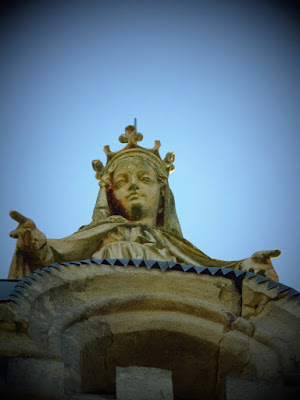A world of movie magic can be found in the beautiful city of Lyon. My sister and I decide to meet up in France's third-largest city for our annual weekend together. After taking trains, planes and automobiles (along with shuttle buses and subways), we find each other at Gare Part-Dieu, drop our bags at the hotel and head to Musée Miniature & Cinema — a site I've deemed to be a "must-see."
 |
This room actually is a tiny model with amazing intricate
detail — just one of the hundreds of miniatures displayed at the
Musée Miniature and Cinema in Lyon, France. |
I had located the museum earlier in the day. Good thing too, because the narrow streets of Vieux-Lyon could be confusing after dark (and après un peu de vin) if I hadn't had the time to get oriented while waiting for Sandy's train to arrive from Paris. The collections are housed in the 16th-century Maison des Avocats, a UNESCO world heritage site.
 |
Musée Miniature and Cinema is housed in the Maison des Avocats (Lawyer's
House) in Lyon. |
The museum is the brainchild of Dan Ohlmann, cabinet-maker-turned-miniaturist. Ohlmann gained notoriety in Paris in the 1980s when he created his first miniature: a 1/12th scale model of the Art Nouveau-style restaurant Chez Maxim's and went on to organize a successful international miniatures exhibition. He eventually moved to Lyon and created the Palais de la Miniature in which he exhibited 1,000 tiny pieces. Backed by a Swiss art-collector and patron, Ohlmann's miniatures eventually were moved to its present location and expanded to include hundreds of film props. For a movie-fan like me, Musée Miniature and Cinema just had to be experienced. And believe me, I was wowed!
 |
| One of the smaller-than-life props at the Musée Miniature and Cinema in Lyon |
The collection is spread over five floors, linked by winding stone staircases. Delightful surprises await us in each room. Our visit starts with a sizeable exhibit centered around a film I've never heard of: "Le parfum: Histoire d'un meurtrier" (or "Perfume: The Story of a Murder.") How on earth did I miss this 2006 film staring Dustin Hoffman, and Alan Rickman — two of my favorite actors? (However, once I see the gory sets I figure out why I passed on "Parfum.")
 |
| A set from the 2006 film "Perfume: The Story of a Murder" |
Signs at the entrance to some of the rooms advise those who are young or sensitive to avoid the bloody scenes inside. There are plenty of body parts and spooky monsters, for sure. And there also are plenty of cinematic icons: Harry Potter's wand, Mrs. Doubtfire's face and, as part of a special temporary exhibit dedicated to the films of Wes Anderson, the exterior of the Grand Budapest Hotel.
 |
Prosthetic worn by Robin Williams in "Mrs. Doubtfire"
at the Musée Miniature and Cinema in Lyon. |
 |
Exterior of the Grand Budapest Hotel as seen in the 2014 film by the same name
is part of a temporary Wes Anderson exhibit at the Musée Miniature and Cinema
in Lyon. |
 |
A miniature from "Planet of the Apes" (2001) at the Musée
Miniature and Cinema in Lyon |
 |
A model from the 2007 horror film "The Mist" at the
Musée Miniature and Cinema in Lyon |
 |
A "green-screen" model reveals a little movie magic at
the Musée Miniature and Cinema in Lyon. |
The last half of our visit is dedicated to Ohlmann's miniatures and if it wasn't getting near to closing time, we could linger for hours examining these miraculous scenes. Each intricate detail, some seen only with the help of a magnifying glass, is amazing.
 |
Subway car miniature by artist Dan Ohlmann at the Musée Miniature and Cinema
in Lyon. |
Ohlmann is passing along his passion and expertise to a team of miniature artists who work in the museum workshop. His team also includes artists who repair and restore film artifacts.
For more information about Lyon's Musée Miniature and Cinema, visit the website
here.
Next up: My sister and I spend some quality time with marionettes as our weekend in Lyon continues.



















































